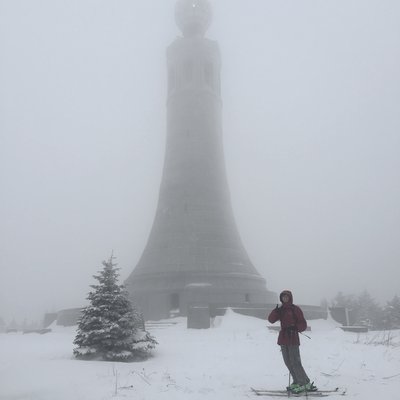VD.I often tour solo, although it is dependent on the objective. If it requires a fairly high level of technical skill, then I usually prefer to ski it solo. I suppose AAIRE/CAA classes teach to the doctrine of 'safe travel', and of course if you're caught in a slide, you're chances of being dug out from a full burial are higher if you're in a party.
Pits are really time consuming, and don't always provide a great deal of insight.You can dig three pits in a line next to each other with a few metres in between, and they'll all give you different results. Sometimes these results will correlate, but they'll often be pretty contradictory. Again in AAIRE/CAA classes they teach you dig them pretty liberally, but in reality it's not practical. In North America pit digging seems to have much wider popularity than elsewhere.
Yeh, some people are pretty clueless, and the more time you spend in the backcountry, the more you see it.
I know this thread is about the age demographics of NS backcountry folks but this passive attitude towards direct observations of snowpack concerns me.
1. Snow stability tests (CT, ECT, SS) can be done in 15-20 min (with practice) and should done EVERY time you are entering a new area. Tremper's motto is "if your toes get cold, you're taking to long."
2. If you are skiing with a group, have everyone split up and dig pits on different aspects, slope angles, shaded/open slopes.
The SPATIAL DISTRIBUTION of snow layers is the exact thing you are looking for (or trying to avoid).
3. If you still can't afford to stop dig hand pits: feel for hardness differences, preform hand shear tests.
4. Find test slopes for ski cuts: small slopes with low consequences
If you ski in the Wasatch or other areas with lots of people there's probably more snow pack data available from secondary sources, so my point is don't go into the backcountry without SOME idea of what the snowpack structure is like, I live in Idaho where data is sparse expect for a few concentrated zones.

















